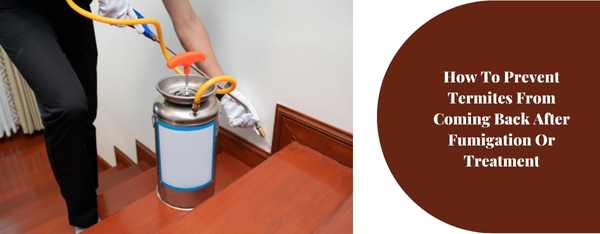
Termites are one of the most economically damaging pests to homes and buildings, causing an estimated $5 billion in damages every year in the UAE alone. They consume wood from the inside out, weakening buildings and eventually causing them to collapse.
Homeowners need to be proactive in order to prevent an infestation by scheduling regular structural checks and treatments. However, if you already have had a termite control service, you will still need to take care of the infected areas to prevent them from coming back.
How Long Do Termites Live After Treatment?
The effectiveness of a treatment regimen against termites depends on the extent of the infestation. If there are just a few termites, they can be easy to get rid of. However, if there are many termites, they can be more difficult to get rid of. The reason for this is that termites require moist soil to survive.
When the soil is moist, it is easier for the termites to transfer moisture into the structure. This makes it more difficult to keep the humidity low. As a result, it may take a few days or weeks for the termites to start dying.
After the worker termites die, you might see a swarm even though you just treated them. This is because their organs have adapted to dry conditions, so they can survive the first few days after treatment. The treatment might take some time to reach the queen, so it might not look like it is working at first. Once the queen dies, the rest of the colony will too. Make sure to sweep up the dead termites.
How to prevent termites from coming back?
Although we always recommend hiring a professional for inspection and maintenance, there are some things you can do to help reduce the risk of any issues and remain termite-free. Here are the things you should do following the fumigation process so that it is safe for you to return.
Here are a few tips that you can follow to prevent termites from coming back after fumigation or treatment.
1. Hire A Cleaning Company
After fumigation, it is of utmost importance that your whole house is cleaned from top to bottom. Some companies use lethal gas and other harmful chemicals during the process, which can be dangerous for you and your family. Pets are also at risk, so it is best to find a professional cleaning company that specializes in post-fumigation cleanings. All surfaces and doors should be paid close attention to in order to ensure a thorough clean.
2. Apply A Sealant To Outside Wood Surfaces
Applying paint and sealant to the exterior surfaces of any buildings on your property - like a shed, gazebo, or detached garage - can help deter termites. If you don’t take this precaution, you risk termites taking up residence on your property and causing damage to your house. If you have a wood fence, have it treated as well to help keep termites at bay.
3. Remove Dead Wood
Dead trees and shrubs need to be removed from the property for a few reasons. Firstly, dead wood is attractive to termites and plays a role in the cycle of life. Secondly, having dead wood on your property can potentially infect someone else's home with termites. Have someone come and haul it away to a safer location as soon as possible.
4. Watch Your Firewood
Having firewood can be great for both you and dry wood termites, but it's important to take some precautions so that the insects don’t end up taking over your home. Make sure to keep the wood off of the ground by using a bin or shelving system, and don’t store it up against the house. By taking these simple steps, you can enjoy your firewood without worry!
Replace Affected Areas
The best thing you can do to restore your home after an infestation is to call a professional. They will be able to assess the damage and help you make a plan to repair the areas of your home that have been affected.
Wrapping Up
Learning where to watch is important to know to prevent termites from coming back after fumigation or treatment. If you are too tired to do it by yourself, the best bet is to hire a professional termite control service.




